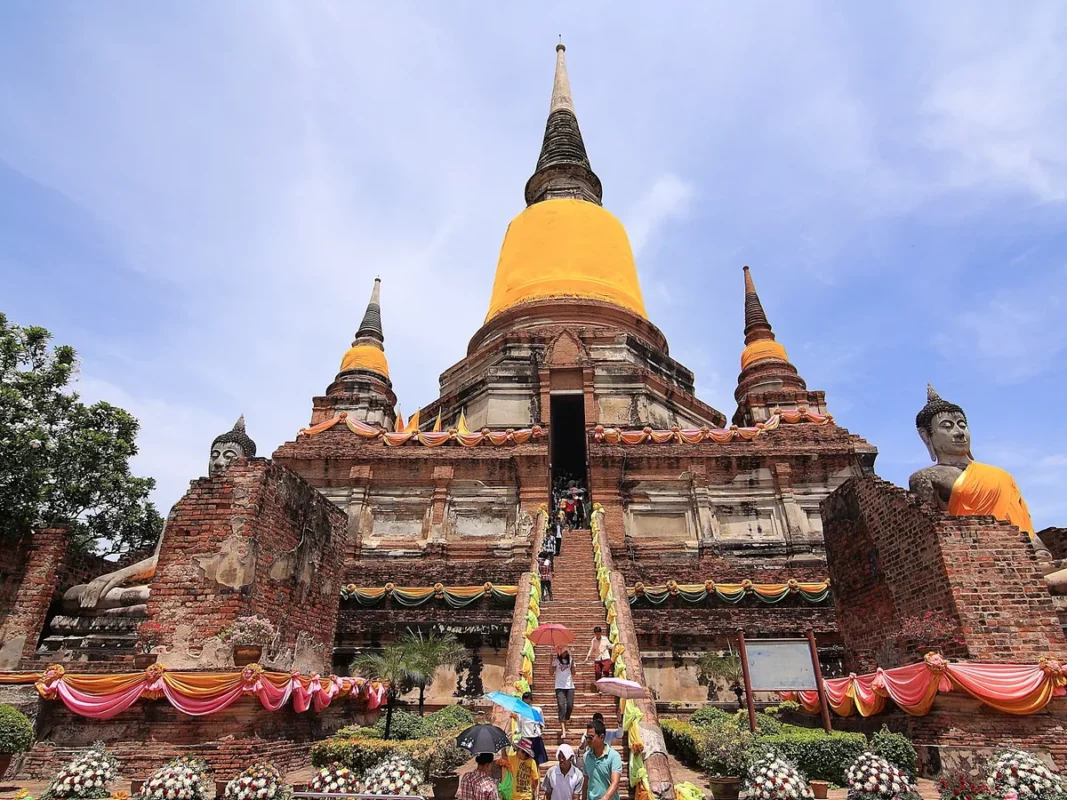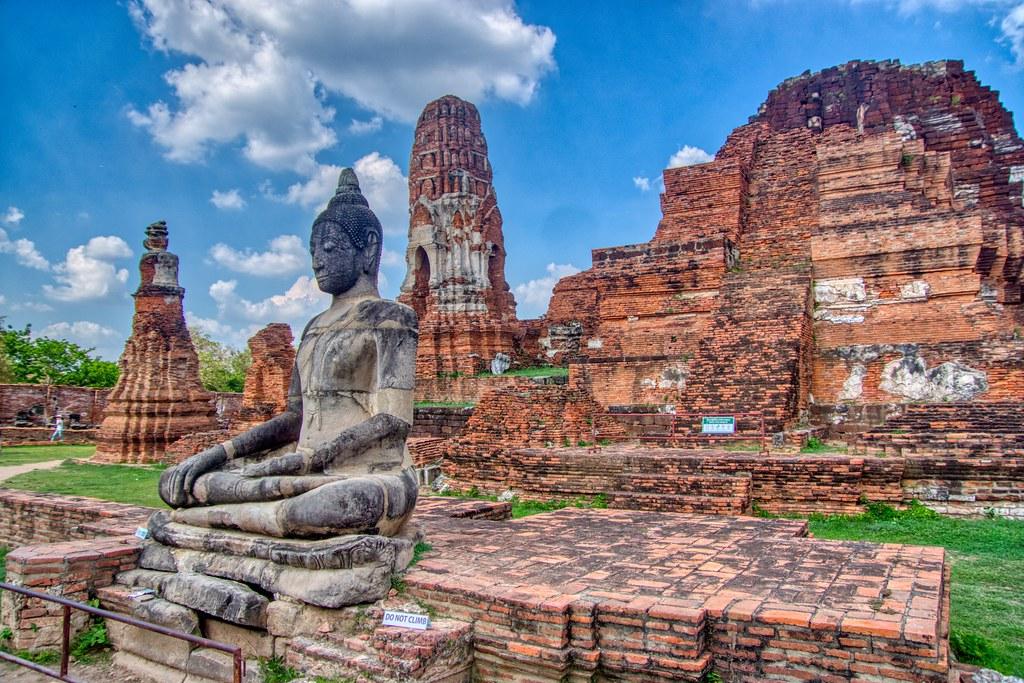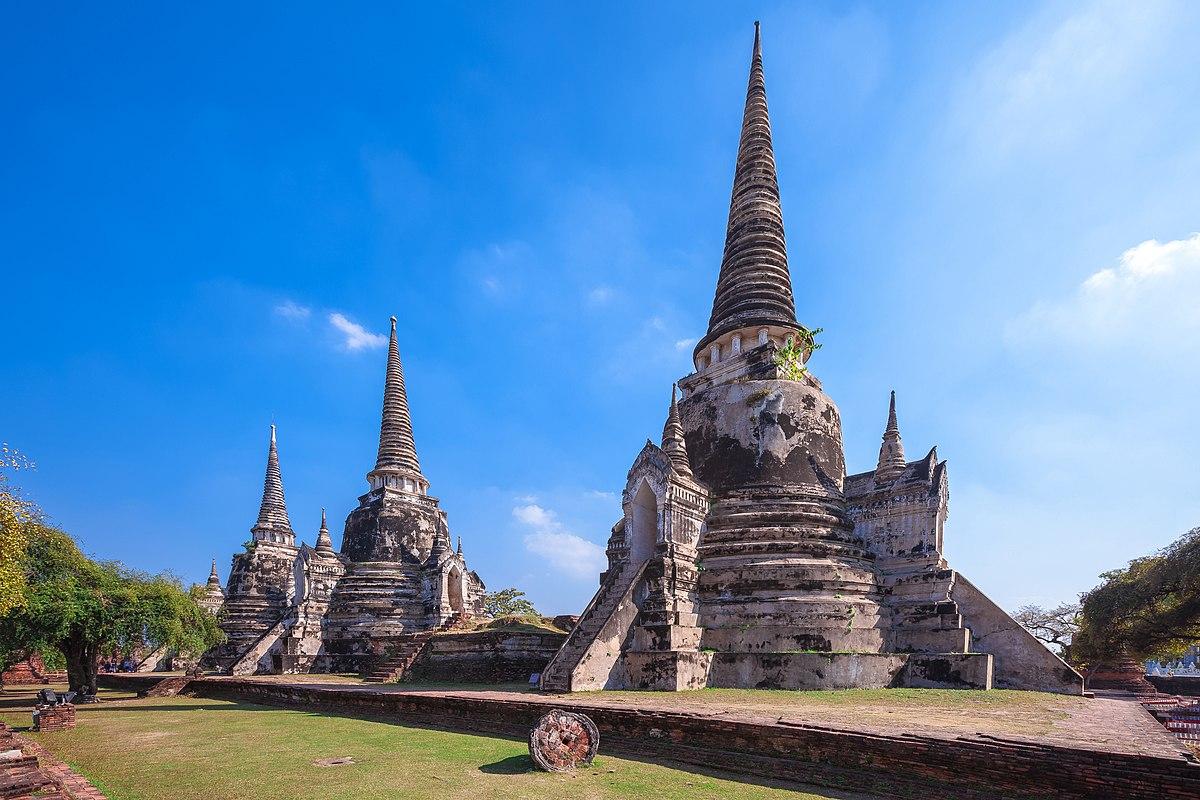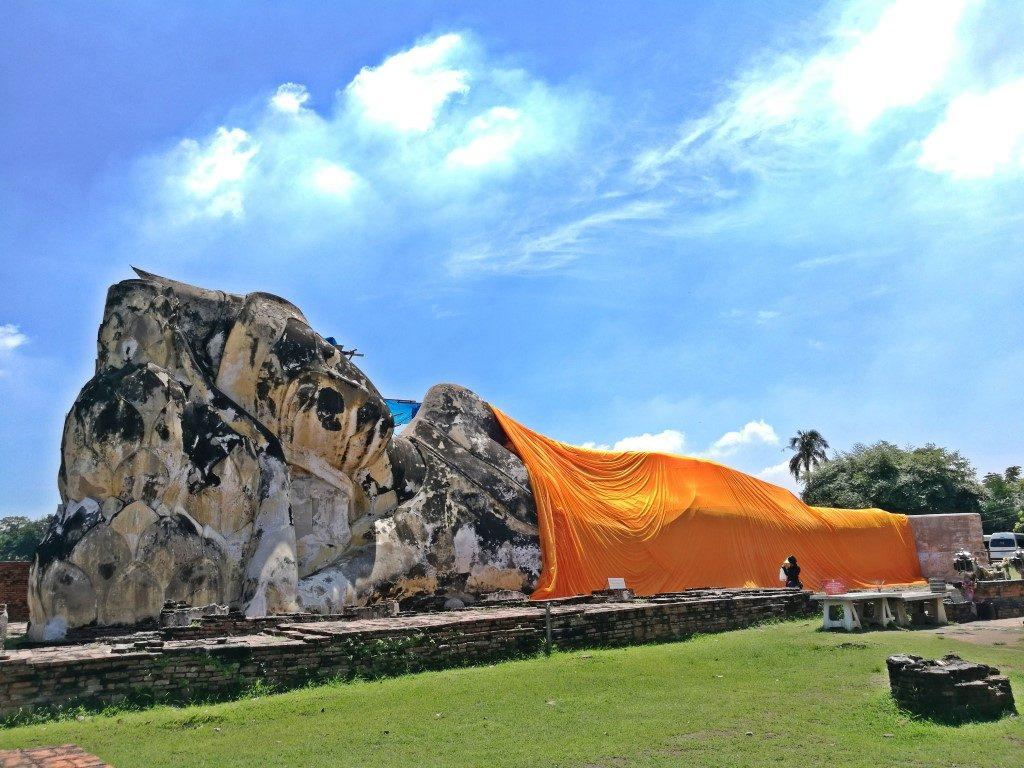Ayutthaya, a city just north of Bangkok, has a long history and a storied culture that dates back to the 14th century. It is home to exciting historical and archaeological monuments. Through the final decades of the 18th century, this city served as the Kingdom of Siam’s capital. Ayutthaya Historical Park’s archaeological complex, which also contains palaces, monasteries, Buddhist temples, and antiquated statues, currently comprises the remnants of the old city. The most well-known and significant sites in this area include the ancient Buddhist temple Wat Mahathat, the renovated royal temple Wat Phra Si Sanphet, and the 13th-century temple complex Wat Phra Ram.
There are other unusual and more contemporary attractions. The Ayutthaya Elephant Palace and Royal Kraal, where you may ride and feed elephants, are among the most entertaining. Traditional markets like Kong Khong Market and Chao Phrom Market are bursting with arts and crafts, fresh vegetables, prepared cuisines, and cultural sights, sounds, and smells. The Million Toy Museum has hundreds of exhibits with both vintage and modern toys.
Ayutthaya is not an expensive place for tourists. There are a lot of cheap flights and budget friendly hotels for travelers who are on budget.
Must see Temples in Ayutthaya

One of the most well-preserved old royal monasteries is Wat Yai Chaimongkhon, which is located right before the eastern entrance to the inner city. The temple is renowned for its enormous reclining Buddha and a 62-meter-tall chedi (pagoda) inverted bell shape constructed to honor King Naresuan’s triumph over the Burmese.
The temple was built as a forest temple school during the reign of King U-Thong (1350-1369), and it is situated on extensive grounds with lush landscaping. Cloister walls surrounding the main chedi are decorated with numerous Buddha images, which is a distinctive aspect of Early Ayutthaya Period architecture.

Before King Trailoknat replaced it with Wat Phra Si Sanphet, Wat Phra Mahathat served as the royal ceremonial venue for both religious and non-religious events. Built before Ayutthaya became the Siamese capital, the temple is thought to have been the spiritual center of the Early Ayutthaya Period. It has a Khmer-style prang that once housed a little casket housing the Buddha’s relics but has since collapsed (now on display at Chao Sam Phraya Museum).
A popular icon of Ayutthaya today, the lone Buddha’s head imprisoned by the roots of an overgrown banyan tree is located in Wat Phra Mahathat in addition to the main pagoda. The Buddha’s head is rigorously guarded around-the-clock, and even the smallest act of disrespect, such as taking pictures while standing directly in front of it, is frowned upon.

From 1350 to 1448, Wat Phra Si Sanphet in Ayutthaya housed the Royal Monastery. Within the now-demolished Royal Palace’s fortifications, the shrine currently encompasses extensive grounds. One of the few remaining buildings on the temple grounds, which are in and of itself a must-see ruin site, are the three distinctive chedis, which house the royal relics of three Ayutthaya Kings.
Two mandapas for housing Buddhist texts and artifacts originally existed on what now appears to be vacant space between the three chedis. The concrete columns from the main chapel are still visible to the east of the chedis. You will eventually arrive at the Royal Palace’s entrance if you keep moving northward.

The historical center of Ayutthaya is represented by Wat Lokayasutharam, which is located in the northwest of the island. Due to the near total destruction of the other buildings, the reclining Buddha statue at Phra Noon is merely a statue without a temple.
It has a somewhat more rugged aspect than its gigantic brother in Bangkok because it is made of bricks and cement and covered in a huge saffron-colored robe. In front of it is a small scale replica that worshippers have decorated with gold leaf.

Just northwest of the Historical Park, Wat Phu Khao Thong is encircled by rice fields and a small lake. The massive white chedi’s upper levels, which stand 50 meters tall, offer stunning views of the surrounding landscape.
The current structure was first constructed in 1569, while significant alterations have been made over the ages. A statue of King Naresuan and a Buddha footprint from Saraburi are nearby. Compared to other temples near Ayutthaya’s center, this one is a little off the beaten path and is frequently fairly peaceful.

The Burmese army employed Wat Na Phra Men as a military command center, therefore it was the sole temple still standing when Ayutthaya surrendered. The interior of the building contains a stunning Buddha image that is completely dressed in regal garb, which is a characteristic of the Late Ayutthaya Period.
The beautiful hand-carved wooden gable and baluster windows on the main chapel of Wat Na Phra Men are a distinctive example of Middle Ayutthaya Period architecture (1488–1629).

